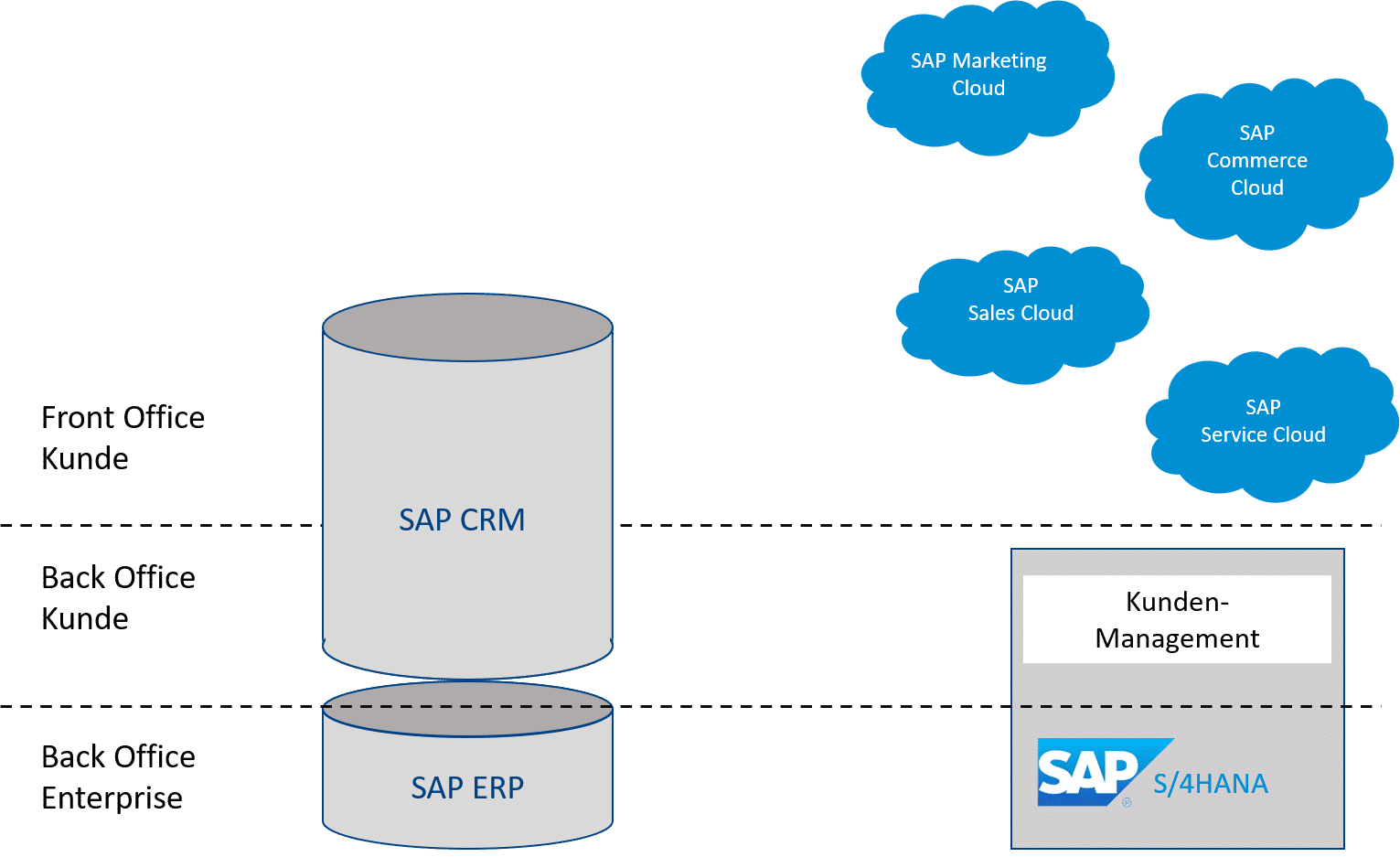S/4HANA Customer Management – really as integrated as SAP claims? Part 2
In the first part of our blog series, we showed you why S/4 Customer Management represents real added value, at least for those responsible for the system. Compared to the tried-and-tested SAP CRM, the new CRM variant under S/4 is now actually integrated into the ERP. This means that the data migration from the legacy system is quite simple to implement and the infrastructure in the new S/4 world is much simpler, as the interface between CRM and ERP is now omitted.
In the second part, Michael Stump, Managing Director and SAP CRM expert at itmX GmbH, sheds light on another perspective. Namely, that of the users.
Mobile solution for field service only possible with an additional cloud solution
We have already discussed this in more detail in the first part of the blog series: SAP has reflected on its very own strengths and offers an integrated CRM system under S/4 – without interfaces. This significantly simplifies the system landscape and eliminates problems with data exchange.
Gone are the days when complex and, above all, usually expensive interfaces had to be developed in order to make the customer data collected in the CRM also available in SAP ERP. The heart of every SAP system manager will now beat faster.
However, if we now look at the new S/4HANA Customer Management from the user’s point of view, for example from the perspective of the sales force, it quickly becomes apparent that the system does not have a mobile component as standard. Here, SAP refers to the SAP Sales Cloud, which has a mobile component and can be connected to S/4 via SAP Cloud Integration.

However, in today’s digital and networked world, in which the demands of software users are becoming ever higher in addition to customer demands, mobile apps that support employees, especially in sales or field service, are indispensable. Today’s needs require that information – using the example of sales – a complete 360° view of the customer, his last orders, open sales opportunities, complaints, and perhaps even an overview of payment behavior is available easily and quickly on the smartphone or tablet without much searching on the go. The same applies to the follow-up of appointments. Simply record a summary of what has been said, attach the transcribed voice memo to the customer record and send it to the back office for further processing. This not only saves time, but often has a direct impact on sales, because sales can spend much more time in the field and the office days that used to be common are often completely eliminated or limited to a minimum.
In our opinion, this should be a component of CRM that should be implemented out-of-the-box without major development efforts and, above all, without complex interfaces – because CRM and ERP work closely together here.
Added value for the back office, deficits for marketing
From the point of view of the back office, the advantages of the system should first be emphasized. The user no longer has to deal with two different systems in the sales process and thus no longer with different user interfaces (UI). The processes from lead processing to order entry are mapped in one system. Opportunity management enables transparent control of the sales process. An absolute added value.
However, if we look at the type of customer communication, which often takes place via e-mail, the system is now cut off again. There is no appointment synchronization with Outlook and you won’t find an e-mail integration either. Other integrations, such as those of collaboration tools such as MS Teams or Sharepoint, which are required in modern office environments today, are also not available.
In marketing, the Builder segment fell victim to one of the simplification lists. With the Segment Builder, marketers were able to create target groups in SAP CRM and use them in various marketing activities. Conversely, however, this now means that due to the rationalization of the Segment Builder, the marketing functionalities are no longer available as standard. Controlling classic marketing campaigns from CRM is therefore no longer possible with S/4 Customer Management. This is where SAP is strategically relying on the Marketing Cloud. This is certainly a modern solution for today’s marketers, but it has to be connected to the S/4 with extensive interfaces. Not to mention the implementation and operating costs.
Conclusion: The integration of SAP CRM under S/4 HANA has been technologically successful. For mobile scenarios, in sales and also in service, subsystems are necessary that partially map the functionalities of the S/4 HANA CRM. Due to the lack of Microsoft integration and the complex integration of marketing, the customer journey is only associated with massive effort and now with more interfaces than it was before the switch to S/4. In addition, the use of the sales and service cloud creates duplicate functions, which means that many processes overlap where you would actually only need one tool.
In the next and last part of our blog series, you can read whether there is a real alternative to SAP CRM and its CRM functionalities without an interface under S/4HANA. Stand by.
Lectures on the subject
About the author

